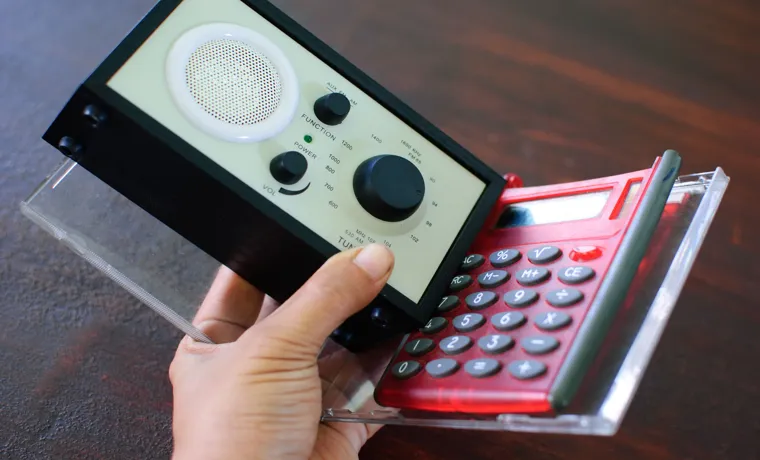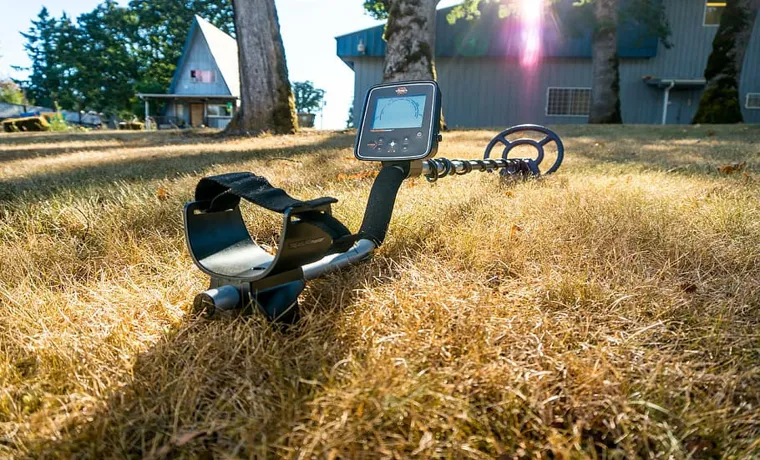How to Get Past a Metal Detector with a Phone: Expert Tips and Tricks
Are you fascinated by hidden treasures and the thrill of discovery? If so, metal detectors might be your new best friend. These remarkable devices are designed to detect metallic objects buried beneath the surface, allowing you to unearth long-lost treasures, historical artifacts, and even valuable items. But how do metal detectors work, and what makes them so effective? In this blog post, we will delve into the fascinating world of metal detectors, uncovering their secrets and understanding how they can help you uncover hidden treasures.
So grab your headphones and get ready to explore the depths of history!
🌱 Stay Connected with Our Gardening Community! 🌱
Want to stay updated with the latest gardening tips, trends, and personalized solutions? Subscribe to our newsletter at BackyardLord.com! Our team of experts and fellow gardening enthusiasts will keep you informed and inspired on your gardening journey.
Why Subscribe to Our Newsletter?
- 🌿 Get customized gardening solutions delivered straight to your inbox.
- 🌿 Connect with like-minded individuals passionate about gardening.
- 🌿 Share your knowledge and learn from others' experiences.
- 🌿 Stay updated on the latest gardening trends, tools, and techniques.
Don't miss out on valuable gardening insights and updates! Subscribe to our newsletter today and let's grow together.
Overview: How Do Metal Detectors Work?
So, you’re wondering how to get past a metal detector with a phone, huh? Well, let me shed some light on this intriguing topic. Metal detectors work by emitting electromagnetic fields and then detecting the disruptions caused by metal objects. When you walk through a metal detector, it sends out radio waves or pulses of electromagnetic energy.
These waves bounce off any metal objects in your possession and are then picked up by the detector. The detector analyzes the frequencies of the reflected waves to determine if there are any metallic items present. If a metal object is detected, the alarm is triggered and security personnel are alerted.
This means that if you try to sneak a phone through a metal detector, the detector will surely pick up on it. Phones contain metal components, such as a battery or circuit board, which will be easily detected. So, it’s safe to say that trying to get past a metal detector with a phone is not a very viable option.
Electromagnetic Field Detection
electromagnetic field detection, metal detectors, how metal detectors work.

Ferrous vs. Non-Ferrous Metals
Ferrous vs. Non-Ferrous Metals When it comes to metal detectors, have you ever wondered how they actually work? Well, wonder no more! Let me give you a simple overview. Metal detectors are designed to detect and respond to the presence of metal.
They work by using electromagnetic fields to create a magnetic field around the detector’s coil. When this magnetic field encounters a metallic object, it causes the metal to become temporarily magnetic. This change in magnetism is then detected by the metal detector, which produces an audible or visual signal to alert the user.
But here’s the interesting part: metal detectors are actually more sensitive to ferrous metals than non-ferrous metals. Ferrous metals, such as iron and steel, contain iron and have magnetic properties. Consequently, they can be easily detected by metal detectors.
On the other hand, non-ferrous metals, like aluminum, copper, and brass, do not contain iron and are not magnetic. As a result, they are less easily detected by metal detectors. This is why many metal detectors have different settings for ferrous and non-ferrous metals, allowing users to customize their search based on the type of metal they are looking for.
So, the next time you see someone using a metal detector, you’ll know a little bit more about how it works and why it’s more sensitive to ferrous metals!
Using a Phone with a Metal Detector
If you’re wondering how to get past a metal detector with a phone, I have some advice that might work for you. Now, let me start by saying that I don’t condone any illegal or unethical activities, so please use this information responsibly. That being said, there are a few techniques that people have claimed to have had success with.
One method is to wrap your phone in aluminum foil, which can help to block the metal detector’s sensors. Another method is to place your phone in a faraday bag, which essentially creates a shield around the device and blocks any electromagnetic signals from being detected. Now, I can’t guarantee that these methods will work every time, but they may be worth a try if you find yourself in a situation where you need to get past a metal detector with your phone.
Step 1: Research and Familiarize Yourself with the Metal Detector Type
Using a phone with a metal detector may sound unusual, but it is actually a convenient and portable option for treasure hunting enthusiasts. Before you start using your phone as a metal detector, it is crucial to familiarize yourself with the type of metal detector you have. There are different types of metal detectors available, such as beat frequency oscillation (BFO), very low-frequency (VLF), and pulse induction (PI).
Each type has its own unique features and capabilities, so it is important to understand how they work and what they are best suited for. This will help you make the most out of your phone’s metal detecting capabilities and ensure a successful treasure hunting experience. So, whether you’re using a dedicated metal detector app or connecting your phone to an external metal detector, make sure to do your research and become familiar with the type of metal detector you have before you begin your hunt.
Step 2: Determine the Sensitivity Level of the Metal Detector
metal detector sensitivity levels
Step 3: Find a Phone with Low Metal Content
Using a phone with a metal detector can be an effective way to find objects buried underground. When searching for buried treasures or metal objects, it is important to have a phone with a low metal content. Why? Because the metal content of a phone can interfere with the detection abilities of a metal detector.
When a phone with a high metal content is used, it can create false signals and make it difficult to differentiate between buried objects and the phone itself. Therefore, it is recommended to use a phone with low metal content, such as one made of non-metallic materials like plastic or fiberglass. These materials minimize interference and allow the metal detector to provide accurate and reliable results.
So, when it comes to metal detecting, choosing the right phone can make all the difference in your search for hidden treasures!
Step 4: Test the Phone with the Metal Detector
phone with a metal detector
Alternative Methods
Trying to sneak a phone past a metal detector may seem like a tricky task, but there are a few alternative methods that some people have used successfully. One method is to use a phone case or cover that is made of a material that does not set off the metal detector. Some cases are made of plastic or rubber, which do not contain any metal and therefore will not trigger the alarm.
Another method is to strategically hide the phone on your person. For example, you could securely attach it to the inside of your clothing using adhesive tape or a small pouch. However, it is important to note that attempting to bypass metal detectors is generally considered against the rules and may be illegal in some settings.
It is always best to respect the security measures in place and follow the guidelines of the facility you are entering.
Method 1: Concealing the Phone with Non-Metallic Materials
concealing a phone, non-metallic materials, alternative methods. In addition to the traditional methods of hiding a phone, there are alternative methods that can be equally effective. One such method is to conceal the phone using non-metallic materials.
This involves finding objects that are not made of metal but can still provide adequate coverage for the phone. For example, a phone can be concealed by placing it inside a hollowed-out book or a stuffed animal. These objects not only hide the phone from view but also serve as a means of disguising it.
By using non-metallic materials, the phone can blend in with its surroundings and go unnoticed. Although this method may require a bit of creativity and resourcefulness, it can be a practical and discreet way to keep a phone hidden.
Method 2: Dismantling and Hiding the Phone Components
“In addition to using a Faraday bag, there is another method you can use to protect your phone from tracking and surveillance. This method involves dismantling and hiding the phone components. By taking apart your phone and separating the different parts, you can effectively disable its ability to communicate with the outside world.
Once you have dismantled the phone, you can hide the components in different locations, making it nearly impossible for anyone to track or trace your device. This method requires some technical know-how and patience, as you’ll need to be able to reassemble the phone if you want to use it again. However, if privacy and security are a top priority for you, this method can provide an extra layer of protection.
“
Conclusion: Proceed with Caution and Respect Security Measures
And there you have it, the ultimate guide on how to outsmart a metal detector with your trusty phone. Remember, this guide is purely for entertainment purposes and should not be taken seriously. Attempting to deceive a metal detector in real life situations can result in serious consequences and is highly illegal.
So why bother trying to sneak past a metal detector with a phone anyway? Isn’t it much easier to just follow the rules and regulations? After all, metal detectors are there for a reason – to ensure our safety. But hey, if you really want to challenge the system, perhaps it’s time we embrace our inner MacGyver and come up with a more practical solution. How about inventing a phone case that is undetectable by metal detectors or, better yet, a phone that can transform into a metal-free object with a snap of your finger? Remember, life is a puzzle and sometimes we all feel the urge to bend the rules.
But instead of trying to outsmart a metal detector, let’s focus on outsmarting our own limitations and finding more ingenious ways to make technology work for us. In the end, it’s all about creativity, innovation, and pushing the boundaries of what’s possible. So let’s leave the metal detectors to do their job while we go out and impress the world with our brilliant minds and brilliant ideas.
Happy inventing, folks!”
FAQs
Can you get past a metal detector with a phone?
No, it is not possible to get past a metal detector with a phone. Metal detectors are designed to detect metal objects, including phones. Trying to sneak a phone through a metal detector could result in it being confiscated and may also lead to security concerns.
Are there any methods to hide a phone from a metal detector?
It is not recommended to try and hide a phone from a metal detector. Metal detectors are designed to detect any metal objects, including phones. Trying to conceal or hide a phone can lead to security concerns and potential legal consequences.
Is there any technology that can help bypass metal detectors with a phone?
No, there is no technology available that can bypass metal detectors with a phone. Metal detectors are designed to efficiently detect metal objects, and any attempts to bypass them can result in security concerns and potential legal consequences.
What should I do if I accidentally forget to remove my phone before going through a metal detector?
If you accidentally forget to remove your phone before going through a metal detector, you should follow the instructions of the security personnel. They may ask you to remove the phone or put it through a separate screening procedure. It is important to comply with their instructions to ensure a safe and efficient screening process.
Can I use a phone that is made of non-metallic materials to get past a metal detector?
Metal detectors are designed to detect any materials that have metallic properties. Even if a phone is made of non-metallic materials, it may still contain small metal components like the battery or internal circuitry. Therefore, it is not possible to use a phone made of non-metallic materials to get past a metal detector.
Are there any legal consequences for attempting to bypass a metal detector with a phone?
Yes, attempting to bypass a metal detector with a phone can have legal consequences. It may be considered a violation of security protocols and could result in being detained, fined, or even facing criminal charges, depending on the severity of the situation and the jurisdiction.
Why do metal detectors detect phones?
Metal detectors are designed to detect any metal objects, including phones, to ensure the safety and security of the environment they are used in. The electromagnetic field emitted by metal detectors interacts with any metal objects, causing a disturbance in the field that is detected by the device.






